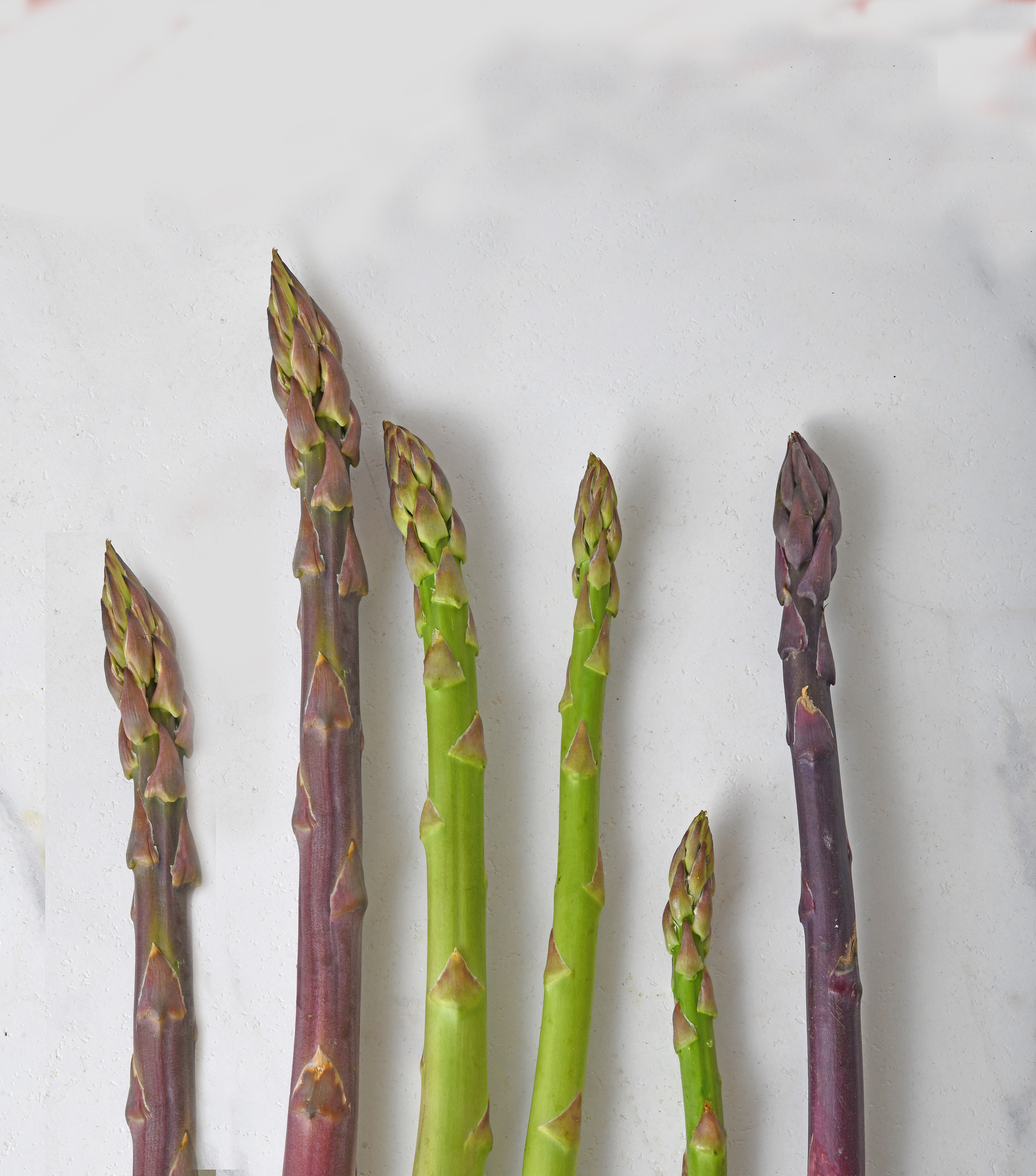
Composition and nutritional value of asparagus
The table below lists the theoretical nutritional values of different kinds of asparagus. The Regulatory Board of Huétor Tájar asparagus has carried out an analysis and found that this variety contains 1% less water, as well as slightly more protein, sugars, and some minerals compared to green asparagus from hybrid North American varieties. [download table].
Nutritional composition of fresh asparagus
(values per 100g)
| WHITE ASPARAGUS | GREEN ASPARAGUS | HUÉTOR TÁJAR WILD ASPARAGUS | |
|---|---|---|---|
| PROTEIN | --- |
--- |
--- |
| TOTAL SUGARS | --- |
--- |
--- |
| LIPIDS | TRACES |
TRACES |
TRACES |
| CALORIES | 0.25Kcal |
22Kcal |
35Kcal |
| FIBRE | 0.9% |
0.9% |
1% |
| PHOSPHORUS | 60mg |
75mg |
69mg |
| CALCIUM | 26mg |
40mg |
48mg |
| MAGNESIUM | 16mg |
21mg |
21mg |
| SODIUM | 4mg |
4mg |
8mg |
| POTASSIUM | 360mg |
370mg |
286mg |
| COPPER | 0.02mg |
2.5mg |
0.21mg |
| IRON | 0.03*0.2mg |
1.2 - 1.9mg |
0.9mg |
| MAGNESIUM | 0.01mg |
0.3 - 0.5mg |
0.12mg |
| ZINC | 0.04mg |
0.7mg |
0.6mg |
| CHROMIUM | 0.007mg |
0.007mg |
--- |
| VITAMIN A | 50U.I. |
980U.I. |
--- |
| VITAMIN B1 | 0.11mg |
0.23mg |
--- |
| VITAMIN B2 | 0.08mg |
0.15mg |
--- |
| VITAMIN B3 | 1.1mg |
2.2mg |
--- |
| VITAMIN C | 28mg |
48mg |
20mg |
Wild asparagus is a food that owes its properties to the surrounding geographical conditions. Born in the mountains and raised in the rich and fertile meadows. This gives it a large number of essential micro-nutrients such as vitamins and minerals. Some of these are: vitamins B1, B2, B3 and A, as well as magnesium, phosphorus, potassium, and sodium.
It is worth noting that, given its low carbohydrate content it is recommended for diabetics.
It is also high in vitamins A and C, especially green asparagus, and these nutrients needed by the body’s antioxidant processes.
In addition, they provide B-complex vitamins, most notably routine (up to 1 mg/100 g), which has antihemorrhagic properties.
It also encourages a ineralising action that benefits the bone system, thanks to its potassium and calcium content.


